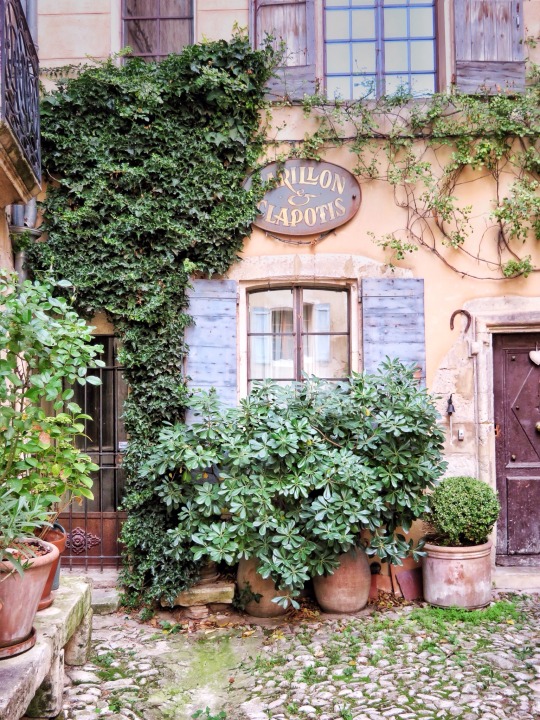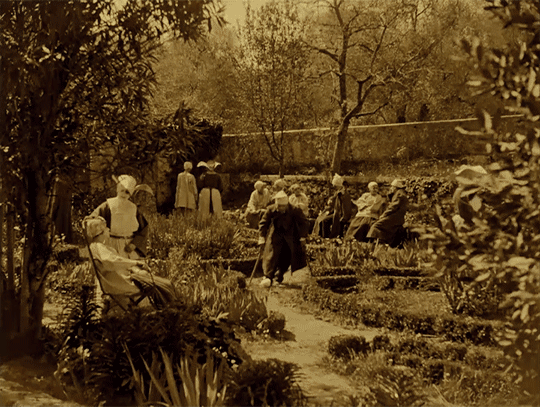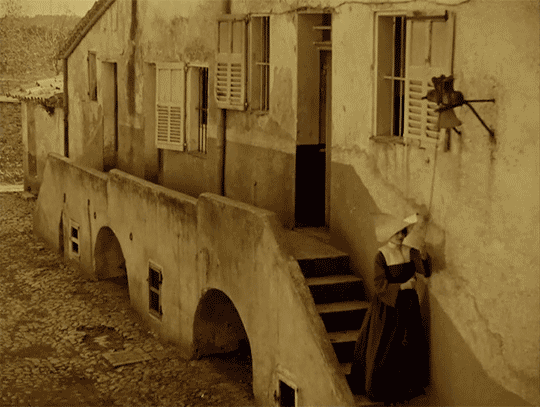#Forcalquier
Explore tagged Tumblr posts
Text

Carillon & Clapotis, Forcalquier…
#photography#original photography#original photography on tumblr#provence#Forcalquier#maison#Alpes de Haute-Provence
159 notes
·
View notes
Text

Organ in the church of Forcalquier, Provence region of France
French vintage postcard
#postkarte#organ#postal#forcalquier#ansichtskarte#provence#french#tarjeta#ephemera#postcard#photography#carte postale#vintage#briefkaart#france#sepia#photo#church#postkaart#region#historic
2 notes
·
View notes
Text
Parachute 392 02.10.2024

VA – Project Cucuron mixtape #1 – Noannaos - 2019 t : Ashley – Inhaaaxhale Cloak of kings - Ayont – Riforma - 2023 t : Fiftyleven days Guilia Rae – o – Riforma – 2018 t : Regolo Dori Soride – Non aver paura - Riforma - 2024 t : Non aver paura Somaticae – Blue lagoon - Riforma - 2024 t : Blue lagoon (rework Undae tropic- Moskus – Bareffot in bryophyte – Hubro - 2024 t : Nils Klim Loren Connors – A West Bound Brook / Gone To Turin - Profane Illuminations - 2023 t : A west bound brook VA – FFF our KMSU – Roundbale recordings - 2013 t : Charlatan – Red portage Miss Canine Hoe – Septem peccata mortalia – Adventurous Music – 2024 t : Superbia VA – All semantics (II) – CMNTX records - 2024 t : Alex Ring Gray - 3200 Phaethon The Stance brothers – Duktus – Wejazz records – 2024 t : Sao polo Read the full article
#Adventurousmusic#Aix-en-Provence#AlexRingGray#Apt#Ashley#Bordeaux#Briançon#Caylus#cfmradio#Cloakofkings#CMNTXrecords#Cordes-sur-Ciel#Digne#Dorisoride#EmbrunGuillestre#émissionradio#Forcalquier#FréquenceLuz#Gap#Hossegor#Hubro#LorenConnors#Luz-Saint-Sauveur#Manosque#MissCanineHoe#Montauban#Moskus#Mulhouse#Noannaos#parachute
0 notes
Text
Dry Gin XII
My thoughts on Dry #Gin XII #Ginreview @DrinkfinderUK
Distilleries et Domaines de Provence emerged in 1974 out of the Distillerie de Lure, which was founded in 1898 at Forcalquier in Provence. It is perhaps best known for its range of absinthes, liqueurs, and Rinquinquin, a rather tasty peach wine. Given its locale and the distillery’s use of botanicals in its other products, it is not surprising that they have ventured into the world of the…

View On WordPress
#Distillerie de Lure#Distilleries et Domaines de Provence#Drinkfinder UK#Dry Gin XII#Forcalquier#Rinquinquin
0 notes
Text

Portrait of Rene of Anjou, also known as King Rene I of Naples. French School.
#royaume de france#maison de valois#dynastie des valois#duc d'anjou#maison d'anjou#valois anjou#duc de lorraine#rené d'anjou#roi de naples#le Bon Roi René#prince du sang#comte de Guise#duc de bar#roi de Sicile#comte de Provence#comte de Provence et de Forcalquier#regno di napoli#re di napoli#regno di sicilia#re di sicilia#Regnum Siciliae ultra Pharum#Regno di Sicilia al di là del Faro#Angiò#house of anjou#royalty
2 notes
·
View notes
Text




My cosplay of Arno Dorian of the game "Assassin’s creed Unity" taken in Forcalquier (France,alpes-de-haute_provences,04)at March 2022
#assassins creed#assassin's creed#gaming#assassin's creed unity#arno dorian#ac unity#cosplay#assassin's creed cosplay#cosplay arno dorian#fait main#france#medieval town#photo shoot
26 notes
·
View notes
Text










Medieval Women Week || Favorite non-royal woman ↬ Garsenda de Sabran
For the past three years he had been under the tutelage of his mother, Garsende de Sabran-Forcalquier, who had been unable to prevent numerous usurpations of comital authority on the part of great vassals eager to profit from the weaknesses of a minority. For the Provençals the reputed beauty and charm of Beatrice de Savoie were probably less important than the martial reputation of her sire, whose alliance might be expected to buttress the position of the regent. The exact date of the marriage is unknown, but it probably took place not long after the betrothal. It was a marriage that was destined to attract attention all over Europe one day, for although Beatrice de Savoie was not able to give her husband sons who lived to succeed him, she did provide him with four beautiful daughters, all of whom became queens. Matthew Paris, a chronicler by no means friendly to the House of Savoy, was sufficiently impressed to compare the countess of Provence to another Niobe, glorying in her children, and he roundly affirmed that among the female sex throughout the whole world, no other mother could boast of such illustrious fruit of the womb as could she in her daughters. Dante Alighieri, writing two generations later, also celebrated the offspring of the count and countess of Provence in the Paradiso: “Quattro figlie ebbe, e ciascuna reina/ Raimondo Berlinghieri, e cio Ie fece/ Romeo, persona umile e peregrina.” — The Eagles of Savoy: The House of Savoy in Thirteenth-Century Europe by Eugene L. Cox Four other poems deserve particular attention. Garsenda, in her beautifully constructed tensó with an unnamed man, comes closest to speaking for the lady who desperately seeks affection but whose social status calls for utter discretion. Her veiled poem is like a smuggled message: “Still, in the long run it’s you who stands to lose/ if you’re not brave enough to state your case/ and you’ll do both of us great harm if you refuse./ For a lady doesn’t dare uncover her true will/ lest those around her think her base.” Garsenda was in fact the highest ranking of the women troubadours. From what is known of her life it is extraordinary that she was able to write even so cautious a poem as this. Unfortunately, nothing is known about the circumstances of its composition. — The Women Troubadours by Meg Bogin
#medievalwomenweek#garsenda de sabran#house of barcelona#french history#european history#women's history#history#medieval#nanshe's graphics
23 notes
·
View notes
Text
M. Myriel Becomes M. Welcome
Les Mis Letters reading club explores one chapter of Les Misérables every day. Join us on Discord, Substack - or share your thoughts right here on tumblr - today's tag is #lm 1.1.2
The episcopal palace of D—— adjoins the hospital.
The episcopal palace was a huge and beautiful house, built of stone at the beginning of the last century by M. Henri Puget, Doctor of Theology of the Faculty of Paris, Abbé of Simore, who had been Bishop of D—— in 1712. This palace was a genuine seignorial residence. Everything about it had a grand air,—the apartments of the Bishop, the drawing-rooms, the chambers, the principal courtyard, which was very large, with walks encircling it under arcades in the old Florentine fashion, and gardens planted with magnificent trees. In the dining-room, a long and superb gallery which was situated on the ground floor and opened on the gardens, M. Henri Puget had entertained in state, on July 29, 1714, My Lords Charles Brûlart de Genlis, archbishop; Prince d’Embrun; Antoine de Mesgrigny, the capuchin, Bishop of Grasse; Philippe de Vendôme, Grand Prior of France, Abbé of Saint Honoré de Lérins; François de Berton de Crillon, bishop, Baron de Vence; César de Sabran de Forcalquier, bishop, Seignor of Glandève; and Jean Soanen, Priest of the Oratory, preacher in ordinary to the king, bishop, Seignor of Senez. The portraits of these seven reverend personages decorated this apartment; and this memorable date, the 29th of July, 1714, was there engraved in letters of gold on a table of white marble.
The hospital was a low and narrow building of a single story, with a small garden.
Three days after his arrival, the Bishop visited the hospital. The visit ended, he had the director requested to be so good as to come to his house.
“Monsieur the director of the hospital,” said he to him, “how many sick people have you at the present moment?”
“Twenty-six, Monseigneur.”
“That was the number which I counted,” said the Bishop.
“The beds,” pursued the director, “are very much crowded against each other.”
“That is what I observed.”
“The halls are nothing but rooms, and it is with difficulty that the air can be changed in them.”
“So it seems to me.”
“And then, when there is a ray of sun, the garden is very small for the convalescents.”
“That was what I said to myself.”
“In case of epidemics,—we have had the typhus fever this year; we had the sweating sickness two years ago, and a hundred patients at times,—we know not what to do.”
“That is the thought which occurred to me.”
“What would you have, Monseigneur?” said the director. “One must resign one’s self.”
This conversation took place in the gallery dining-room on the ground floor.
The Bishop remained silent for a moment; then he turned abruptly to the director of the hospital.
“Monsieur,” said he, “how many beds do you think this hall alone would hold?”
“Monseigneur’s dining-room?” exclaimed the stupefied director.
The Bishop cast a glance round the apartment, and seemed to be taking measures and calculations with his eyes.
“It would hold full twenty beds,” said he, as though speaking to himself. Then, raising his voice:—
“Hold, Monsieur the director of the hospital, I will tell you something. There is evidently a mistake here. There are thirty-six of you, in five or six small rooms. There are three of us here, and we have room for sixty. There is some mistake, I tell you; you have my house, and I have yours. Give me back my house; you are at home here.”
On the following day the thirty-six patients were installed in the Bishop’s palace, and the Bishop was settled in the hospital.
M. Myriel had no property, his family having been ruined by the Revolution. His sister was in receipt of a yearly income of five hundred francs, which sufficed for her personal wants at the vicarage. M. Myriel received from the State, in his quality of bishop, a salary of fifteen thousand francs. On the very day when he took up his abode in the hospital, M. Myriel settled on the disposition of this sum once for all, in the following manner. We transcribe here a note made by his own hand:—
NOTE ON THE REGULATION OF MY HOUSEHOLD EXPENSES.
For the little seminary - 1,500 livres
Society of the mission - 100”
For the Lazarists of Montdidier - 100”
Seminary for foreign missions in Paris - 200”
Congregation of the Holy Spirit - 150”
Religious establishments of the Holy Land - 100”
Charitable maternity societies - 300”
Extra, for that of Arles - 50”
Work for the amelioration of prisons - 400”
Work for the relief and delivery of prisoners - 500”
To liberate fathers of families incarcerated for debt - 1,000”
Addition to the salary of the poor teachers of the diocese - 2,000”
Public granary of the Hautes-Alpes - 100”
Congregation of the ladies of D——, of Manosque, and of Sisteron,<br> for the gratuitous instruction of poor girls - 1,500”
For the poor - 6,000”
My personal expenses - 1,000”
- ———
Total - 15,000”
M. Myriel made no change in this arrangement during the entire period that he occupied the see of D—— As has been seen, he called it <i>regulating his household expenses</i>.
This arrangement was accepted with absolute submission by Mademoiselle Baptistine. This holy woman regarded Monseigneur of D—— as at one and the same time her brother and her bishop, her friend according to the flesh and her superior according to the Church. She simply loved and venerated him. When he spoke, she bowed; when he acted, she yielded her adherence. Their only servant, Madame Magloire, grumbled a little. It will be observed that Monsieur the Bishop had reserved for himself only one thousand livres, which, added to the pension of Mademoiselle Baptistine, made fifteen hundred francs a year. On these fifteen hundred francs these two old women and the old man subsisted.
And when a village curate came to D——, the Bishop still found means to entertain him, thanks to the severe economy of Madame Magloire, and to the intelligent administration of Mademoiselle Baptistine.
One day, after he had been in D—— about three months, the Bishop said:—
“And still I am quite cramped with it all!”
“I should think so!” exclaimed Madame Magloire. “Monseigneur has not even claimed the allowance which the department owes him for the expense of his carriage in town, and for his journeys about the diocese. It was customary for bishops in former days.”
“Hold!” cried the Bishop, “you are quite right, Madame Magloire.”
And he made his demand.
Some time afterwards the General Council took this demand under consideration, and voted him an annual sum of three thousand francs, under this heading: <i>Allowance to M. the Bishop for expenses of carriage, expenses of posting, and expenses of pastoral visits.</i>
This provoked a great outcry among the local burgesses; and a senator of the Empire, a former member of the Council of the Five Hundred which favored the 18 Brumaire, and who was provided with a magnificent senatorial office in the vicinity of the town of D——, wrote to M. Bigot de Préameneu, the minister of public worship, a very angry and confidential note on the subject, from which we extract these authentic lines:—
“Expenses of carriage? What can be done with it in a town of less than four thousand inhabitants? Expenses of journeys? What is the use of these trips, in the first place? Next, how can the posting be accomplished in these mountainous parts? There are no roads. No one travels otherwise than on horseback. Even the bridge between Durance and Château-Arnoux can barely support ox-teams. These priests are all thus, greedy and avaricious. This man played the good priest when he first came. Now he does like the rest; he must have a carriage and a posting-chaise, he must have luxuries, like the bishops of the olden days. Oh, all this priesthood! Things will not go well, M. le Comte, until the Emperor has freed us from these black-capped rascals. Down with the Pope! [Matters were getting embroiled with Rome.] For my part, I am for Cæsar alone.” Etc., etc.
On the other hand, this affair afforded great delight to Madame Magloire. “Good,” said she to Mademoiselle Baptistine; “Monseigneur began with other people, but he has had to wind up with himself, after all. He has regulated all his charities. Now here are three thousand francs for us! At last!”
That same evening the Bishop wrote out and handed to his sister a memorandum conceived in the following terms:— EXPENSES OF CARRIAGE AND CIRCUIT.
For furnishing meat soup to the patients in the hospital - 1,500 livres
For the maternity charitable society of Aix - 250”
For the maternity charitable society of Draguignan - 250”
For foundlings - 500”
For orphans - 500”
- ——
Total - 3,000”
Such was M. Myriel’s budget.
As for the chance episcopal perquisites, the fees for marriage bans, dispensations, private baptisms, sermons, benedictions, of churches or chapels, marriages, etc., the Bishop levied them on the wealthy with all the more asperity, since he bestowed them on the needy.
After a time, offerings of money flowed in. Those who had and those who lacked knocked at M. Myriel’s door,—the latter in search of the alms which the former came to deposit. In less than a year the Bishop had become the treasurer of all benevolence and the cashier of all those in distress. Considerable sums of money passed through his hands, but nothing could induce him to make any change whatever in his mode of life, or add anything superfluous to his bare necessities.
Far from it. As there is always more wretchedness below than there is brotherhood above, all was given away, so to speak, before it was received. It was like water on dry soil; no matter how much money he received, he never had any. Then he stripped himself.
The usage being that bishops shall announce their baptismal names at the head of their charges and their pastoral letters, the poor people of the country-side had selected, with a sort of affectionate instinct, among the names and prenomens of their bishop, that which had a meaning for them; and they never called him anything except Monseigneur Bienvenu [Welcome]. We will follow their example, and will also call him thus when we have occasion to name him. Moreover, this appellation pleased him.
“I like that name,” said he. “Bienvenu makes up for the Monseigneur.”
We do not claim that the portrait herewith presented is probable; we confine ourselves to stating that it resembles the original.
7 notes
·
View notes
Note

Forcalquier, France
9 notes
·
View notes
Text
"Garsenda was born into nobility around CE 1200 in Provence, France. She was the daughter and granddaughter of two strong-willed women who shared her name. Her mother, Garsenda, Countess of Provence and Forcalquier, was a troubadour in her own right. Her father was Alfonso II, Count of Provence, second son of the King of Aragon (whose territories stretched across much of Northeastern Spain and southwest France), and Count of Barcelona and Provence. Garsenda’s marriage in 1220 to Guillem de Montcada, soon to be Viscount of Béarn, connected her to powerful families on both sides of the Pyrenees. In short, she was a powerful woman from a line of powerful women.
But as we well know, nobility doesn’t insulate people from all tragedy. At age nine, Garsenda lost her father, Alfonso, Count of Provence. Alfonso’s death prompted her mother to execute a legal agreement to protect both of her children’s inheritance from other Provençal nobles—including family members—who had designs on their titles. Within a few years, the Albigensian Wars raged throughout Occitania and Provence, and the family of three was forced to flee from Provence to Catalonia, in what is now Spain, for safety.
Tragedy struck Garsenda again in 1229, when her husband was killed in a campaign to conquer Majorca. Guillem’s death left Garsenda with the personal responsibility of caring for their two young children, Constança and Gastó. At the same time, Garsenda was thrust into a very public role when she was forced to contend with the crushing debts left by her husband and parents-in-law when they died. She also had to defend her title to lands on both sides of the Pyrenees mountains—stretching all the way from Aquitaine and Gascony in the west to Majorca in the east. Ambitious men were as eager for her to make good on her husband’s debts as they were to seize control of her lands. Against those odds, Garsenda rose to the occasion. There she was, a young widow with two toddlers who had to face down dozens and dozens of the kingdom’s most powerful men, who were demanding immediate repayment of her husband’s and debts. The wolves were at the gates.
She knew how to play the game. First, she petitioned the king. With support from King Jaime I of Aragon, Garsenda was able to temporarily suspend all financial claims in order to protect assets and titles belonging to her and her children. Lodged among the surviving parchments from the era of King Jaime, now held in the Archive of the Crown of Aragon in Barcelona, are more than 100 individual charters from around 1230-1258 that give us insight into the scope of Garsenda’s actions.
From Garsenda’s surviving charters we find that she assembled a team of advisers, drawn from among Cistercian monks at Santes Creus (a monastery that still stands in Catalonia). These monks became her financial advisers. They helped her assess her debts and apportion payments to her creditors until those debts were satisfied or forgiven. We find in the archives legal agreements that she executed throughout her life on her own behalf.In others, she worked through agents charged with carrying out her direct orders.This is significant. Her dealings over nearly forty years challenge the perception that medieval women lacked agency in their own legal affairs. If women were not allowed agency, nobody told Garsenda about it.
Her plans were so successful that within four years of her husband’s death, Garsenda’s finances had recovered enough for her to make a major donation to reinvigorate a struggling Barcelona convent, Santa Maria de Jonqueres. She would remain involved with that convent, as well as another local one, for the rest of her life. After dispensing with her debts in Catalonia, Garsenda turned to her other problems, namely, her son’s considerable claims to lordships and territories in France and Spain. In order to protect his interests, especially in and around Béarn, she relocated to its capital at Orthez (Ortés). It was there that she established a base of operations for political negotiations. She negotiated with nearly everyone of note: the kings of France, Navarre, Castile, and England, as well as bishops, leaders of religious communities, and local officials. She also ensured her own physical safety by reinforcing the castle there. Even as her son reached the age of majority and could rule in his own name, Garsenda never stepped away from center stage as “countess and viscountess of Béarn.”
#history#women in history#garsenda of provence#france#french history#spain#13th century#middle ages#medieval history#medieval women
18 notes
·
View notes
Text






LES MIS LETTERS IN ADAPTATION - M. Myriel Becomes M. Bienvenu, LM 1.1.2 (Les Miserables 1925)
The episcopal palace of Digne adjoins the hospital. The episcopal palace was a huge and beautiful house, built of stone at the beginning of the last century by M. Henri Puget, Doctor of Theology of the Faculty of Paris, Abbé of Simore, who had been Bishop of Digne in 1712. This palace was a genuine seignorial residence. Everything about it had a grand air,—the apartments of the Bishop, the drawing-rooms, the chambers, the principal courtyard, which was very large, with walks encircling it under arcades in the old Florentine fashion, and gardens planted with magnificent trees. In the dining-room, a long and superb gallery which was situated on the ground floor and opened on the gardens, M. Henri Puget had entertained in state, on July 29, 1714, My Lords Charles Brûlart de Genlis, archbishop; Prince d’Embrun; Antoine de Mesgrigny, the capuchin, Bishop of Grasse; Philippe de Vendôme, Grand Prior of France, Abbé of Saint Honoré de Lérins; François de Berton de Crillon, bishop, Baron de Vence; César de Sabran de Forcalquier, bishop, Seignor of Glandève; and Jean Soanen, Priest of the Oratory, preacher in ordinary to the king, bishop, Seignor of Senez. The portraits of these seven reverend personages decorated this apartment; and this memorable date, the 29th of July, 1714, was there engraved in letters of gold on a table of white marble. The hospital was a low and narrow building of a single story, with a small garden.
#Les Mis#Les Miserables#Les Mis Letters#les Mis Letters in Adaptation#LM 1.1.2#Les Mis 1925#Les Miserables 1925#lesmisedit#lesmiserablesedit#lesmis1925edit#lesmiserables1925edit#pureanonedits#the SETS of 1925!!#I wish this kept the order and impact of the brick though.#Oh well.
44 notes
·
View notes
Text

Escalier menant à la citadelle de Forcalquier…
#photography#original photography#original photography on tumblr#provence#Forcalquier#alpes de haute provence#escaliers
123 notes
·
View notes
Text

St Michel fountain in Forcalquier, Provence region of France
French vintage postcard
#vintage#tarjeta#france#briefkaart#forcalquier#postcard#photography#michel#region#fountain#postal#carte postale#sepia#provence#ephemera#historic#french#ansichtskarte#postkarte#st michel#postkaart#photo
1 note
·
View note
Text
Parachute 391 29.09.2024

Kroubikou – Pssgr – Concrete collage - 2023 t : Meow VA – Injacomp002- Injazero records -2020 t : Kmru - Byculla VA – De la : in loving memory of Yancey – Ruanda records - 2018 t : Sir Chen – Sounds similar, i’m not feeling em VA - FFFour KMSU – Roundbale recordings – 2013 t : Rambutan – Aftermath One million eyes – Iris - A strangely isolated place - 2023 T : tangeri Goran Kajfeš Tropiques – Tell us – Wejazz Records – 2024 t : Prije i posle Kjetil Mulelid – Agoja – Odin records - 2024 t : Alone (feat. Arve Henriksen and Selma French) VA – We continue our journey through the univere – Tusk editions – 2021 t : Gregory Nieuwsma & Antonello Perfetto - A Few Opening Remarks Hop-frog's drum jester devotional - Bets Ov volume 1 – 2014 t : Love in a Minefield Read the full article
#Astrangelyisolatedplace#Aix-en-Provence#AntonelloPerfetto#Apt#ArveHenriksen#ArveHenriksenandSelmaFrench#Bordeaux#Briançon#Caylus#cfmradio#Concretecollage#Cordes-sur-Ciel#Digne#EmbrunGuillestre#émissionradio#Forcalquier#FréquenceLuz#Gap#GoranKajfešTropiques#GregoryNieuwsma#GregoryNieuwsma&AntonelloPerfetto#Hop-frog'sdrumjesterdevotional#Hossegor#injazerorecords#KjetilMulelid#kmru#Kroubikou#Luz-Saint-Sauveur#Manosque#Montauban
0 notes
Text
Me: Hugo isn't obsessed with details, you are just lazy fucks
Hugo: In the dining-room, a long and superb gallery which was situated on the ground-floor and opened on the gardens, M. Henri Puget had entertained in state, on July 29, 1714, My Lords Charles Brulart de Genlis, archbishop; Prince d'Embrun; Antoine de Mesgrigny, the capuchin, Bishop of Grasse; Philippe de Vendome, Grand Prior of France, Abbe of Saint Honore de Lerins; Francois de Berton de Crillon, bishop, Baron de Vence; Cesar de Sabran de Forcalquier, bishop, Seignor of Glandeve; and Jean Soanen, Priest of the Oratory, preacher in ordinary to the king, bishop, Seignor of Senez.
#bare minimum of world building#les mis letters#trying to join but with a huge delay#take notes fanfic writers#do you also have a century long backstory of one dining room that a minor oc visited once in the beginning of the story or are you normal#bishop myriel#les miserables#i guess i should tag this as#lm 1.1.2#?#victor hugo#aspa reads les mis
23 notes
·
View notes
Text

René d'Anjou (1409-1480). Unknown artist.
#royaume de france#maison de valois#maison d'anjou#valois anjou#ducs d'anjou#duc d'anjou#prince du sang#le Bon Roi René#rené d'anjou#comte de guise#duc de bar#duc de lorraine#roi de naples#roi de sicile#comte de Provence et de Forcalquier#comte de provence#roi de Jérusalem#pair de France#regno di napoli#re di napoli#house of anjou
4 notes
·
View notes